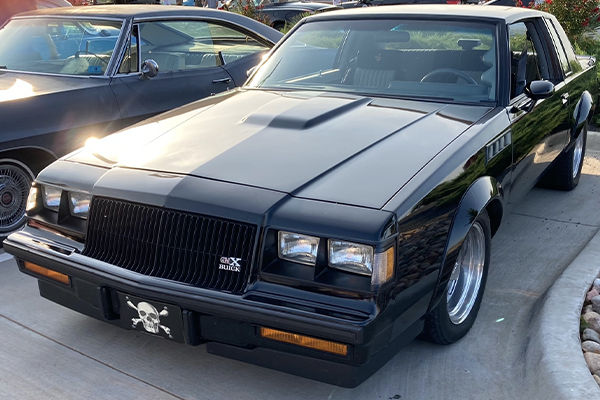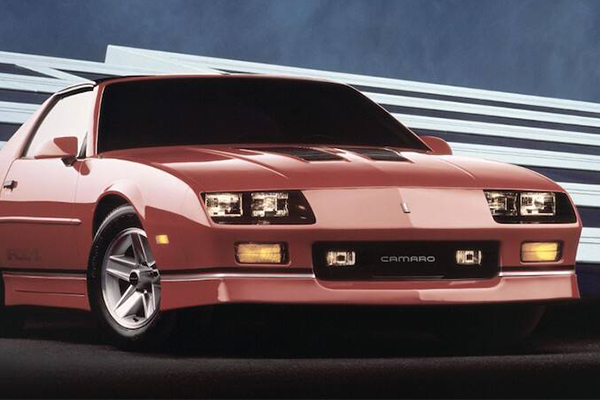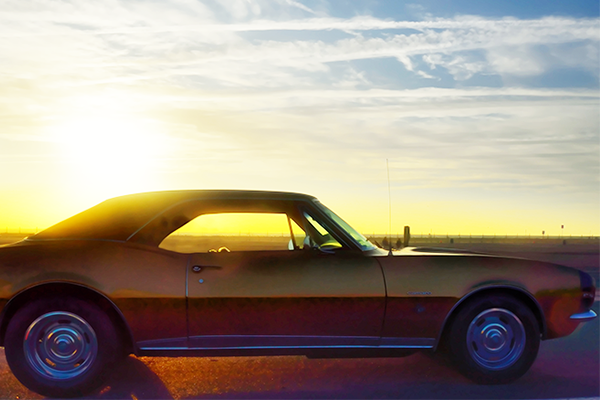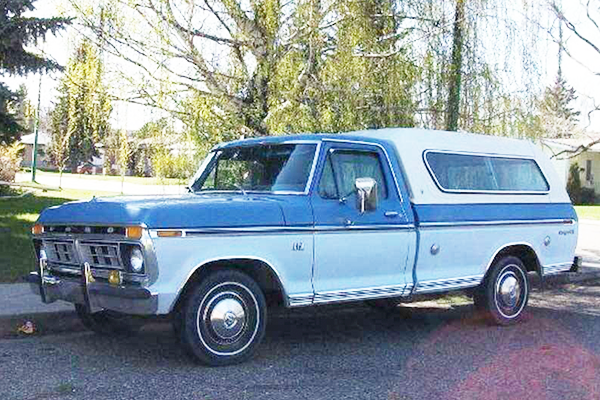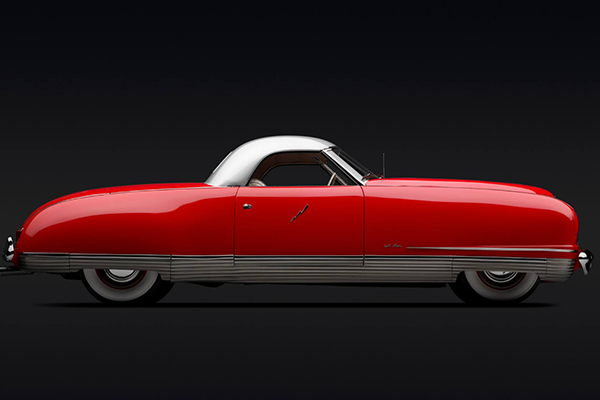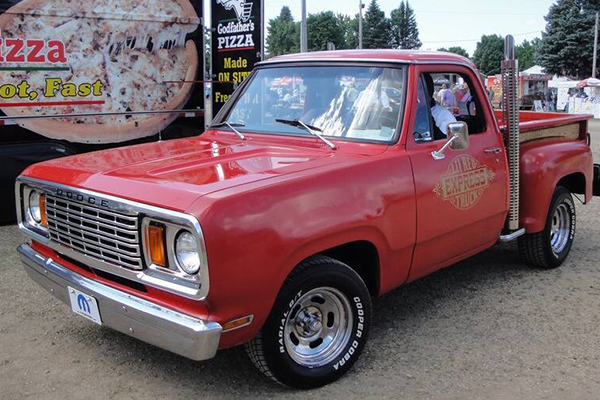From timeless icons to everyday essentials, Crucial Cars examines the vehicles we can't live without. For this installment, we put the spotlight on Buick's iconic '80s muscle car, the Grand National.
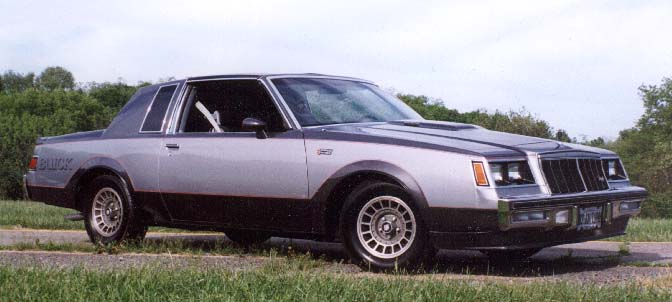
The year 1982 marked the slow rebirth of American performance cars. The “malaise" era, which ran roughly from 1975 through 1981 and marked a dark time when engines continually lost power, was finally ending. Thanks to new technologies, such as computerized fuel injection and ignition timing, engines could run more cleanly and efficiently while making more power than before. Performance started its return to American car showrooms as Ford crowed “The Boss is Back" in advertisements for the '82 Mustang GT with its “high output" 5-liter V8. General Motors was at the party, too, as Chevy and Pontiac rolled out leaner, sharper handling versions of the Camaro and Firebird, while Buick quietly brought out the Grand National.
Right about now, some of you might be thinking we've got the introductory year of Buick's bruiser wrong. We can see it now: “Did you skip your morning coffee, guys? The Grand National came out in 1984, not 1982." But serious Buick buffs may know that the Grand National debuted when “We Got the Beat" and “Eye of the Tiger" were burning up the Top 40 charts. And that the Grand National wore, for that one year, a silver/gray paint scheme.
Started out in silver
Something of a spiritual successor to Buick's Skylark Gran Sport of the '60s and '70s, that first Grand National was similarly based on Buick's midsize Regal personal luxury coupe. A 4.1-liter V6 with just 125 horsepower was the standard mill, with Buick's turbocharged 3.8-liter V6 as an option. The turbo six made a respectable 175 hp—keep in mind these were the times that 5.0-liter V8s were making on the order of 150-165 horses. Inspired by Buick's success in NASCAR racing, the Grand National drew its name from the NASCAR Winston Cup Grand National race series. A number of tweaks set it apart from your aunt's vinyl roof-topped, bench-seated Regal. The Grand National featured a sharp charcoal gray/silver two-tone paint scheme with large “Buick" decals on its rear quarters, along with turbine-style alloy wheels. Inside were bucket seats, a console and a sporty metal-spoked, leather-wrapped steering wheel. Given that there were only 215 Grand Nationals made that first year, one might be forgiven for not knowing this car ever existed.
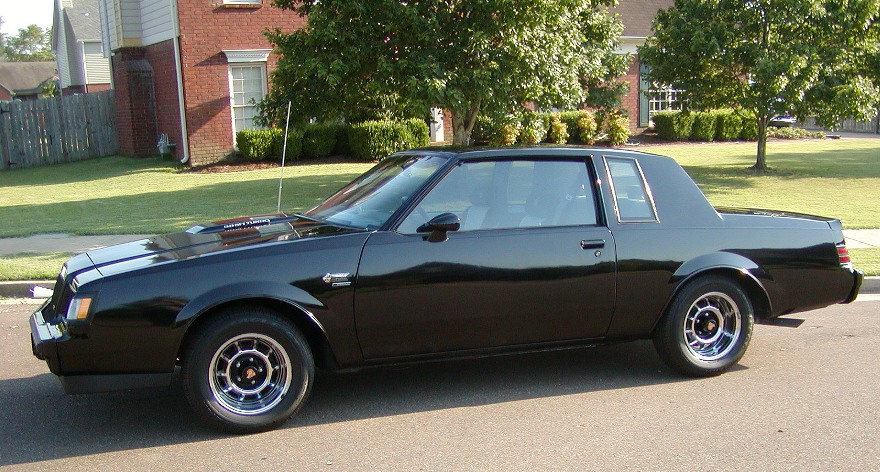
Skipping a year
For 1983, the Grand National took the year off. So did the Chevy Corvette, but that's a story for another time. Meanwhile, the Mustang, Camaro, and Firebird saw their performance variants getting stronger. Although those smaller, “pony car" segment cars aren't direct rivals to the Grand National, it's important to note that performance was now steadily on the rise for these American cars. What was a direct rival came from Chevrolet, as it chose this year to debut its Monte Carlo SS. A cousin to Buick's Regal (and Oldsmobile's midsize Cutlass), it was built on the same platform, but rather than offering a turbo V6, the Monte SS sported a high-output 5.0-liter (305-cubic-inch) V8 making 180 horsepower.
Back in black
Returning to the Buick lineup for 1984, the Grand National took on a decidedly more sinister visage. Available only in black, with color-keyed bumpers and grille insert to further the menacing vibe, the Grand National also featured cool turbo V6 emblems on the body and inside the car. Under the skin, the 3.8-liter turbo V6 was standard, and now fortified with sequential fuel injection and computer-controlled ignition, made 200 hp along with a healthy 300 lb-ft of torque. Running through its standard four-speed automatic (the only transmission available) and able to dash to 60 mph in about 7.5 seconds and run down the quarter-mile in the high-15s, the Grand National backed up its tough looks with serious-for-the time street cred. The 1985 Grand National was essentially a repeat of 1984.

Gotta be cool now
Things got more serious for 1986, as the Grand National received a major increase in performance. The turbo V6 saw the fitment of an intercooler, which as the name suggested cooled the air going into the engine. Cooler air is denser than warmer air, which helps to create more power. Bottom line? A walloping output of 235 hp and 330 lb-ft. It all made for a blacked-out personal luxury coupe that, in terms of straight-line gusto, could show its tail lights to the mighty Corvette, let alone those pesky Mustang GTs, Z28s, Trans Ams, Monte Carlo SSs, and Olds 442s. You want numbers? The '86 Grand National could blast to 60 mph in the high 5-second range and unreel the quarter-mile in the low- to mid-14s.
Sadly, 1987 would be the last year for the Grand National (as GM prepared to launch its completely redesigned, front-wheel-drive midsizers for '88), but it wasn't going out quietly. Instead, Buick boosted the Grand National's firepower to 245 hp and 355 lb-ft. Performance numbers were stunning, as car mags of the day got sub-5-second 0-60s with their quarter-mile times ranging from high-13s to low-14s. It takes a keen eye to discern the minor visual differences between an '86 and an '87, as the latter has a completely blacked-out grille (no chrome mustache) with thicker vertical bars inside it. As for that not “going out quietly" statement, the limited production (just 547 produced) Buick GNX was the Grand National taken to a higher level.
Built in concert with McLaren Performance Technologies and ASC, the GNX boasted an upgraded turbocharger with a ceramic impeller and bigger intercooler, along with a less restrictive exhaust system, reprogrammed engine controller, beefed-up transmission, and reworked rear suspension. Somehow, the GNX managed to look even more menacing than a standard Grand National, fitted with 16-inch wheels with black mesh centers, front fender vents and the deletion of the Grand National's various emblems from the body sides and hood bulge. Unique interior treatment was part of the deal, too, as the dash featured round gauges and a serial number plaque on the dash, indicating which production number of the 547 GNXs your car was. The GNX's more powerful 3.8-liter turbo V6 made (a very conservatively rated) 276 hp and 360 lb-ft. Performance was unbelievable — this Buick was one of the quickest cars in the world with a 0-to-60 time of around 4.6 seconds and the ability to obliterate the quarter-mile in about 13.3 seconds. Put another way, the GNX could spank most anything on four wheels apart from the top dogs from the kennels of Porsche, Ferrari and Lamborghini. Indeed, the Grand National could not have gone out with a bigger “bang."
Do you have fond memories of a Grand National? Share them in the comments.

